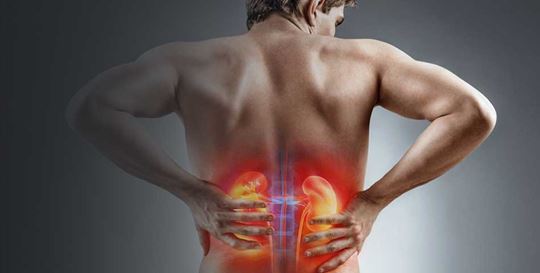Urinalysis plays a crucial role in diagnosing and monitoring various health conditions in a way that is cost-effective and noninvasive. It provides valuable insights into kidney function, urinary tract infections, metabolic disorders, and other underlying diseases. Urine is collected midstream or by catheterization and is examined within one hour after collection to avoid destruction of formed elements.1 Urine typically then undergoes chemical testing, using reagent test strips, and microscopic evaluation. Additional tests may include microbiology and cytology.
Findings on urinalysis can also indicate certain patterns of kidney disease and whether the disease is likely to be acute versus chronic in nature. Acute kidney injury (AKI) is the deterioration of kidney function over hours or days, resulting in the retention of nitrogenous wastes and creatinine in the blood. Chronic kidney disease (CKD) results from the gradual loss of kidney function over months or years. The presence of heavy proteinuria and lipuria are consistent with nephrotic syndrome.1
Kidney function declines with age, and kidney diseases are more common in patients with existing comorbidities such as diabetes and high blood pressure.2 Unfortunately, many people do not have physical symptoms until the damage is severe,3 with symptoms often being overlooked, making kidney disease a silent killer. Between 2000 and 2019, kidney disease moved from the 13th leading cause of death to the 10th.4
A common clinical approach in assessing kidney dysfunction is to investigate the cause and severity of the renal abnormalities. In all cases, this evaluation includes the patient history, physical exams, urinalysis, glomerular filtration rate (GFR), and urine albumin-creatinine ratio (ACR). Alongside a patient’s eGFR, urine tests can help give a more accurate picture of how well the kidneys are working.1
What is the Importance of Urine Microscopy?
Urine microscopy consists of the evaluation of particles such as WBC, RBC, casts, crystals, and epithelial cells. While it is common to find some epithelial cells in the urine, an increased number may be a sign of trauma, inflammation, or infection in the urinary tract. Similarly, bacterial or yeast in the sample suggest an underlying renal system infection. Blood cells in the urine may be benign—for example, as a result of heavy exercise—but may also indicate a more serious disorder such as a severe infection or urinary tract cancer.5
Casts and crystals especially may provide evidence of significant renal disease in patients. Urine microscopy is vital to aiding in the diagnoses of many asymptomatic cases and for those that are unable to verbalize their symptoms to their physician due to conditions like dementia or apraxia. Some common renal diseases include urinary tract infection (UTI), urinary tract tumors, kidney disease, and nephrotic syndrome.6
Formation and Significance of Urinary Casts
Casts are cylindrical particles that clump together and are formed either in the distal convoluted tubules or the collecting ducts of the kidney. The walls of the tubules act as a mold for cast formation, and the width of the tubule determines the width of the cast. Thus, narrow casts are formed in the distal tubules, while broad casts are formed in the collecting ducts.7
Casts are formed by the accumulation of uromodulin (formerly known as the Tamm-Horsfall mucoprotein). Uromodulin entraps cells and materials within the kidney tubules resulting in formation of protein casts. Elements that favor protein cast formation are low flow rate, high salt concentration, and low pH, resulting in protein denaturing and precipitation.8
Very few casts are seen in the urine of a person without renal disease. A common exception is hyaline casts, which may be seen in low numbers in healthy patients or can, like blood cells, be present after strenuous exercise or after diuretic use. A significant number of urinary casts, including hyaline casts, usually indicates the presence of renal disease.7

Figure 1: Renal tubules are metabolically active and are responsible for absorption or excretion of a wide range of substances.
Formation and Clinical Significance of Urine Crystals
Urine crystals form when excessive minerals are present. Different types of urine crystals form for different reasons. Underlying health conditions, eating a diet too high in protein or salt, or dehydration can cause urine crystals to form. Consequently, when there is an excessive buildup of one or more minerals, urine crystals can form into stones.9
Normally, patients with urine crystals have limited symptoms—unless large stones develop. When stones form, they may pass naturally out of the body, or medical intervention may be required to help remove them.5

Figure 2. When there is an excessive buildup of one or more minerals, a urine crystal can form into a stone. Kidney stones do not usually cause symptoms unless they move around within the kidney or passes into the ureters. If they become lodged in the ureters, they may block the flow of urine and cause the kidney to swell and the ureter to spasm, which can be very painful.
Early Detection is the Most Effective Way to Combat Kidney Disease
A quick, non-invasive urinalysis test highlights the importance of the laboratory’s role in patient care. At least 70% of all clinical decisions are made from laboratory results.10 The goal of any hospital or clinical lab is to provide the highest level of care to the patient, and the technology a lab uses plays a major role in achieving this purpose.
This is especially important with CKD as many patients have no idea that their kidneys are failing. Damaged kidneys leak protein into the urine from the bloodstream, and it is the presence of casts and/or crystals on a urinalysis that may be one of the first early indicators of underlying kidney disease.3
In addition to providing numeric counts and digital image results, integrated automated urinalysis systems with automated urine microscopy and auto-particle recognition software can auto-classify particles based on size, shape, contrast, and texture and can assist with particle sub-categorization. The DxU Iris urine microscopy analyzer automatically identifies 12 particle classifications and 27 sub-classifications.11
For more than 30 years, Iris urine analyzers have provided laboratories with automated urine microscopy to aid clinicians in the diagnosis of diseases such as chronic kidney disease.
With Edit-Free Release (EFR) technology that automatically sends results to the LIS based on user-defined parameters to reduce time-consuming steps and increase lab efficiency, the DxU Iris analyzer creates user-defined reports that laboratorians need.11
Advancements in the DxU Iris are streamlining the urinalysis laboratory workflow and improving laboratory efficiency to take the subjectivity out of urinalysis.
Learn more about the clinical pathology associated with urinary casts

 English
English





